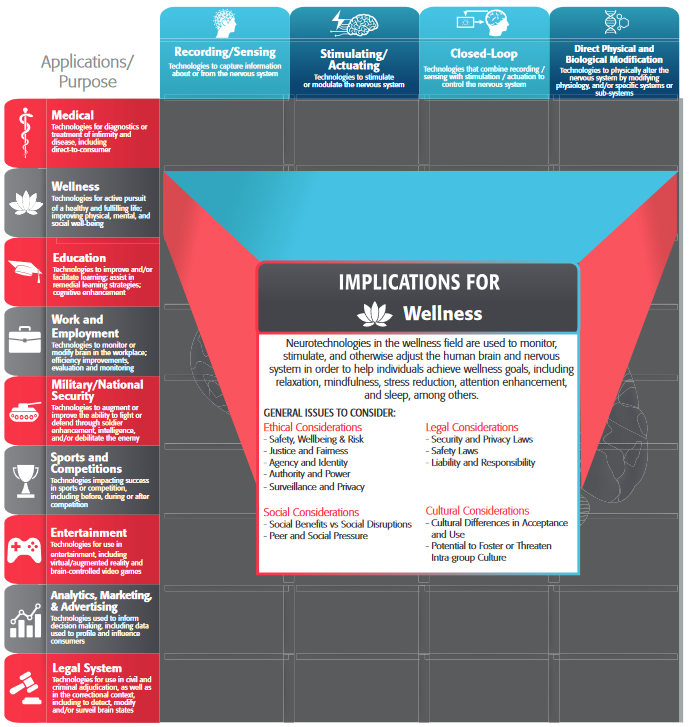Find Media by Category
16 December 2021
Adaptive Deep Brain Stimulation: Investigational System Development at the Edge of Clinical Brain Computer Interfacing
Over the last few decades, the use of deep brain stimulation (DBS) to improve the treatment of those with neurological movement disorders represents a critical success story in the development of invasive neurotechnology and the promise of brain-computer interfaces (BCI) to improve the lives of those suffering from incurable neurological disorders.
28 October 2021
Improving Communication with the Brain Through Electrode Technologies
Over the past 30 years, bionic devices such as cochlear implants and pacemakers have used a small number of metal electrodes to restore function and monitor activity in patients following disease or injury of excitable tissues. Growing interest in neurotechnologies, facilitated by ventures such as BrainGate, Neuralink, and the European Human Brain Project, has increased public awareness of electrotherapeutics and …
16 September 2021
Brain-Machine Interfaces: Beyond Decoding
A brain-machine interface (BMI) is a system that enables users to interact with computers and robots through the voluntary modulation of their brain activity. Such a BMI is particularly relevant as an aid for patients with severe neuromuscular disabilities, although it also opens up new possibilities in human-machine interaction for able-bodied people. Real-time signal processing and decoding of brain signals …
13 August 2021
Electrophysiologic Monitoring and Modulation of Enteric Nervous Systems
We highlight recent technological and methodological advances in deploying miniaturized technologies that can monitor the spatial electrophysiologic patterns of the visceral nervous system. As an example, we discuss recent developments of thin, stretchable, wireless biosensor patches that can be embedded within routinely used medical adhesives for recording electrophysiologic patterns of the GI tract. We also showcase recent developments in array …
9 July 2021
The Challenge and Opportunities of Mapping Cortical Layer Activity
A major outstanding challenge in neuroscience is to integrate across levels of investigation, linking genes, molecules, cells, microcircuits, regions, systems, and behavior. This will require bringing together evidence from sources across different spatial scales—from the microscopic, such as electrophysiological recordings in animals, to the macroscopic, such as conventional neuroimaging in humans. The mesoscale technique of depth-dependent fMRI, or “layer fMRI” …
15 June 2021
Dynamical Neuromorphic Systems
In this talk, I aim to show that the dynamical properties of emerging nanodevices can accelerate the development of smart, and environmentally-friendly chips that inherently learn through their physics. The goal of neuromorphic computing is to draw inspiration from the architecture of the brain to build low-power circuits for artificial intelligence. I will first give a brief overview of the …
20 May 2021
From 1D to 5D: Data-driven Discovery of Whole-brain Dynamic Connectivity in fMRI Data
The analysis of functional magnetic resonance imaging (fMRI) data can greatly benefit from flexible analytic approaches. In particular, the advent of data-driven approaches to identify whole-brain time-varying connectivity and activity has revealed a number of interesting relevant variation in the data which, when ignored, can provide misleading information. In this lecture, I will provide a comparative introduction of a range …
18 March 2021
Motor Imagery BCI for Cognitive Profiling in Disorders of Consciousness and Prospects for Direct Speech
This webinar will cover two current hot topics in EEG-based brain-computer interface research and research ongoing at the Intelligent Systems Research Centre. Part 1 will focus on assessment of patients with prolonged disorder of consciousness (PDoC). Part 2 will focus on direct speech BCIs.
23 February 2021
Seeing the Sound: Optical Neural Interfaces for In Vivo Neuromodulation
Optogenetics has transformed experimental neuroscience by manipulating the activity of specific cell types with light, enabling in vivo neuromodulation with millisecond temporal resolution. Visible light with wavelengths between 430 nm and 640 nm is used for optogenetics, limiting penetration depth in vivo and resulting in an invasive fiber-tethered interface that damages the endogenous neural tissue and constrains the animal’s free …
28 October 2020
Brain Machine Interfaces: Concept to Clinic
Over the last two decades neural prostheses that aim to restore lost motor function have moved quickly from concept to laboratory development and clinical demonstration. In parallel, advances in neural interfacing technologies poised to broaden clinical application of these prostheses are actively in development in both academic and industry settings.
30 June 2020
Optimizing Control and Learning in Neural Interfaces
Direct interfaces with the brain provide exciting new ways to restore and repair neurological function. For instance, motor Brain-Machine Interfaces (BMIs) can bypass a paralyzed person’s injury by repurposing intact portions of their brain to control movements. Recent work shows that BMIs do not simply “decode” subjects’ intentions—they create new systems subjects learn to control. To improve BMI performance and …
31 March 2020
A Large-scale Standardized Physiological Pipeline Reveals Functional Organization of the Mouse Visual Cortex
An important open question in visual neuroscience is how visual information is represented in the cortex. Important results characterized neural coding by assessing the responses to artificial stimuli, with the assumption that responses to gratings, for example, capture the key features of neural responses, and deviations, such as extra-classical effects, are relatively minor. The failure of these responses to have …







